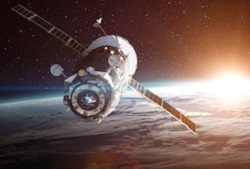Li-S technology gets ready for space missions
Lithium-sulfur (Li-S) technology was patented and developed by OXIS Energy, a British company that set out to revolutionise the rechargeable battery market in 2004. Whilst OXIS mainly targets electric vehicles, the defence sector and solar energy storage, a group of research centres, companies and universities led by Airbus decided to take a gamble on its potential for the space sector in 2015. The ECLIPSE project was born, with the ambition of ensuring that space constraints were considered in the further improvements of Li-S technology. The potential is clearly there: Li-S can operate at much higher temperatures than Li-Ion and allows for a theoretical specific energy 5 times higher than Li-Ion. The technology is also less expensive than its counterpart due to lower raw material cost. It is safer, more environment-friendly, has a great life cycle and boasts very high tolerance to pressure. Moreover, as Bertrand Faure, coordinator of the project for Airbus, puts it: “Li-S technology brings higher energy density, the ratio between energy and mass compared to lithium ion. This helps to have a lighter battery as well as better system performances and costs.” For a sector such as space, where sending 1kg in orbit costs around EUR 10 000, reduced battery mass would be a real game-changer. With Li-Ion seemingly having reached its performance peak and Li-S having already shown promising results, it’s only natural for stakeholders to invest in its development. The ECLIPSE project specifically focused on three improvements: optimisation of the main cell components (cathode, anode, separator and electrolyte) to achieve 400Wh/kg; battery and encapsulation level; and system studies for integration in satellite and launcher architectures. The project’s new cathode current collector concept, for example, uses laser perforation to reduce weight by up to 73 %. “We focused on the technological improvements to would enable high density together whilst extending life cycle. We tried many possible solutions and materials to improve those factors and two patents were issued from those activities,” Faure explains. In the end, the consortium opted for a high energy density cell (twice the energy density of state-of-the-art technology) with potential for further improvements. Besides bringing key actors in the development of materials for Li-S batteries together, the project’s key achievements include a better understanding of the requirements and specifications of space applications; knowledge of the limiting factors and key parameters to be improved to obtain high energy high cyclability Li-S cells; and a demonstration of the usefulness of physical models of lithium sulfur cells. Whilst the project was completed in November 2017, the consortium plans to continue working together to bring Li-S technology to the space market.
Keywords
ECLIPSE, Li-S, Li-Ion, lithium sulfur, batteries, space, energy storage

